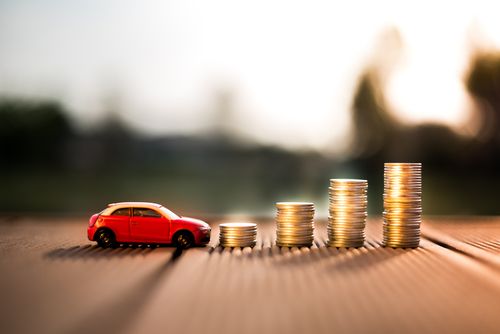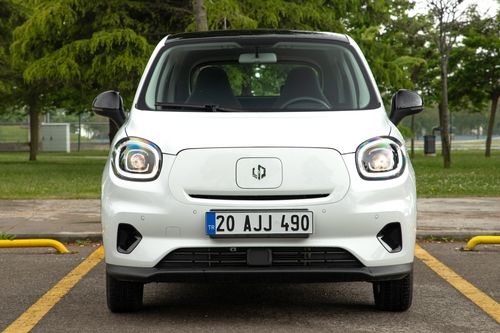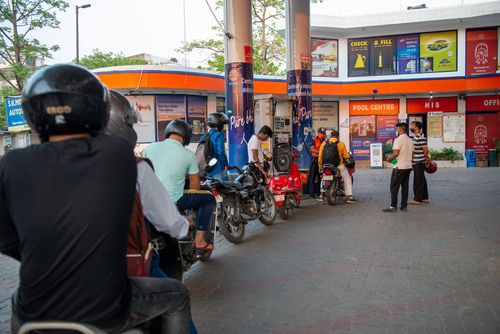All About IDV in Bike Insurance: Meaning, Importance & Impact on Premium
Written by Upstox Desk
Published on July 21, 2025 | 6 min read

While purchasing or renewing bike insurance in India, you might hear the term IDV or Insured Declared Value. To most policyholders, IDV is simply another insurance jargon, but knowing it matters if you're looking for the appropriate coverage and value for your two-wheeler.
IDV has a direct impact on the premium you pay and the sum you can claim in the event of your bike being stolen or damaged beyond repair. Doing it right saves your investment - doing it wrong could leave you overpaying for your policy or underinsured.
Let's break down what IDV means - how it's calculated, its effect on premiums and claims, and why it matters for every bike owner in India.
What is IDV in Bike Insurance?
The term Insured Declared Value (IDV) refers to the maximum amount of compensation or sum promised that your insurance company will pay out in the event that your bicycle is stolen or fully damaged beyond repair.
A good way to think about the IDV is the current market value of your bike after depreciation has been taken into account. It is not the price at which the motorcycle was purchased; rather, it is the value that your insurer assigns to the bike at the time the policy is issued or renewed.
Therefore, if your vehicle is insured for an IDV of ₹60,000 and it is stolen, the insurance company would compensate you up to ₹60,000 (after subtracting the applicable amount). Still, they will not reimburse you for the amount that you initially paid to purchase the vehicle.
How is IDV Calculated?
Indian insurers calculate the IDV based on guidelines issued by the Insurance Regulatory and Development Authority of India (IRDAI).
Here's a simplified formula -
IDV = Manufacturer's listed price – Depreciation based on vehicle age Below is the standard depreciation schedule used to calculate IDV:
| Bike Age | Depreciation (%) |
|---|---|
| Up to 6 months | 5% |
| 6 months–1 year | 15% |
| 1–2 years | 20% |
| 2–3 years | 30% |
| 3–4 years | 40% |
| 4–5 years | 50% |
For bikes older than 5 years or those that have been phased out, the IDV is determined by mutual agreement between the policyholder and the insurer.
Significance of IDV in Bike Insurance
Claim Settlement in Total Loss or Theft
If your motorcycle is stolen or totally wrecked, IDV calculates the highest amount the insurer will settle. The lower the IDV, the less the compensation.
Impact on Premium
A higher IDV results in a higher premium, and the opposite occurs when it is lower. Selecting the ideal IDV weighs your coverage against your pocket.
Resale and Upgrade Decisions
IDV also indicates your motorcycle's market value and can serve as a reference if you are thinking of selling or trading your two-wheeler.
Transparency & Customization
Most insurers now allow you to select your IDV within a valid range, allowing you more control over your policy.
Can You Change the IDV?
Yes. When you purchase or renew your policy, insurers typically provide you with a range of acceptable IDVs for your car. You can select:
-
A higher IDV for greater coverage (for a slightly higher premium)
-
A lower IDV to lower premium (but accept a lower claim amount)
*Be careful, undervaluing your IDV to pay a lower premium can result in significant losses if your bike is stolen or is completely damaged. Always opt for an IDV that represents the fair market value of the vehicle.
IDV in Comprehensive versus Third-Party Insurance
Comprehensive Insurance:
IDV is offered by the insurance company based on the depreciation. For older vehicles, the fix is made as per a mutual agreement between the policyholder and the insurance company.
Third-Party Insurance:
IDV does not apply to third-party-only policies, as they don't provide coverage for theft or own damage. The premium in such policies is fixed and regulated by IRDAI.
How to Check Your Bike's IDV
You can check the IDV:
-
On your earlier policy document
-
Through the insurance company's mobile application or website
-
By approaching customer care
-
Through vehicle valuation tools online
-
Through the insurer's premium calculator during renewal.
Tips for Selecting the Right IDV
-
Don't blindly opt for the lowest IDV to lower premium, it may lead to higher claims.
-
Check your bike's condition and market value annually to update the IDV when renewing.
-
Compare the IDVs of different insurers to get the best value for money.
-
Request customised IDV plans if your bike is more than 5 years old.
Conclusion
IDV is the most vital but least understood part of India's two-wheeler insurance. It not only decides the amount of your claim in the event of loss, but it also has a direct bearing on your premium.
Selecting an appropriate IDV ensures that your two-wheeler is neither underinsured nor overvalued, thereby protecting you from any untimely financial loss. For every Indian bike owner, particularly in cities where theft and accidents are prevalent, knowing IDV is essential for wiser and safer insurance decisions.
FAQs
Does IDV impact two-wheeler insurance premiums?
Yes, an increased IDV raises your premium, while a decreased IDV lowers your premium; however, it also decreases your claim coverage.
Should I opt for a high or low IDV?
Opt for an IDV that is nearest to the current market value of your bike to avail a balanced premium and sufficient protection.
Can the IDV be changed while renewing bike insurance?
Yes, the majority of insurers allow you to modify the IDV in a set range at the time of renewal.
Is IDV applicable in third-party bike insurance?
No, IDV is not applicable in third-party-only insurance plans, as they do not cover own damage or theft.
How does bike age affect IDV calculation?
As your bike ages, its IDV decreases due to depreciation, which in turn reduces both your premium and the claim amount in the event of a total loss.
About Author
Upstox Desk
Upstox Desk
Team of expert writers dedicated to providing insightful and comprehensive coverage on stock markets, economic trends, commodities, business developments, and personal finance. With a passion for delivering valuable information, the team strives to keep readers informed about the latest trends and developments in the financial world.
Read more from UpstoxUpstox is a leading Indian financial services company that offers online trading and investment services in stocks, commodities, currencies, mutual funds, and more. Founded in 2009 and headquartered in Mumbai, Upstox is backed by prominent investors including Ratan Tata, Tiger Global, and Kalaari Capital. It operates under RKSV Securities and is registered with SEBI, NSE, BSE, and other regulatory bodies, ensuring secure and compliant trading experiences.

























